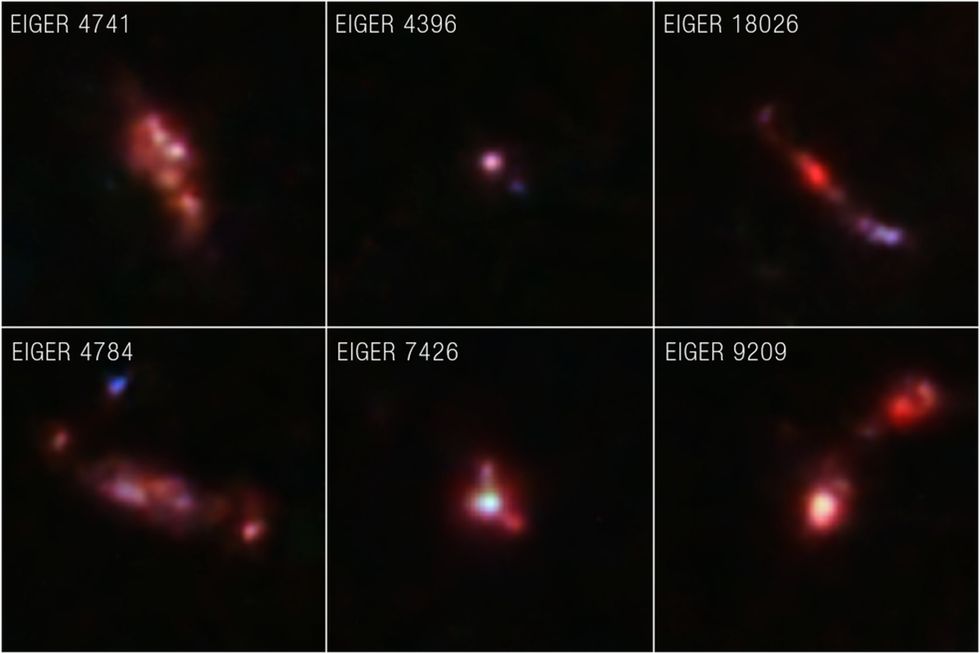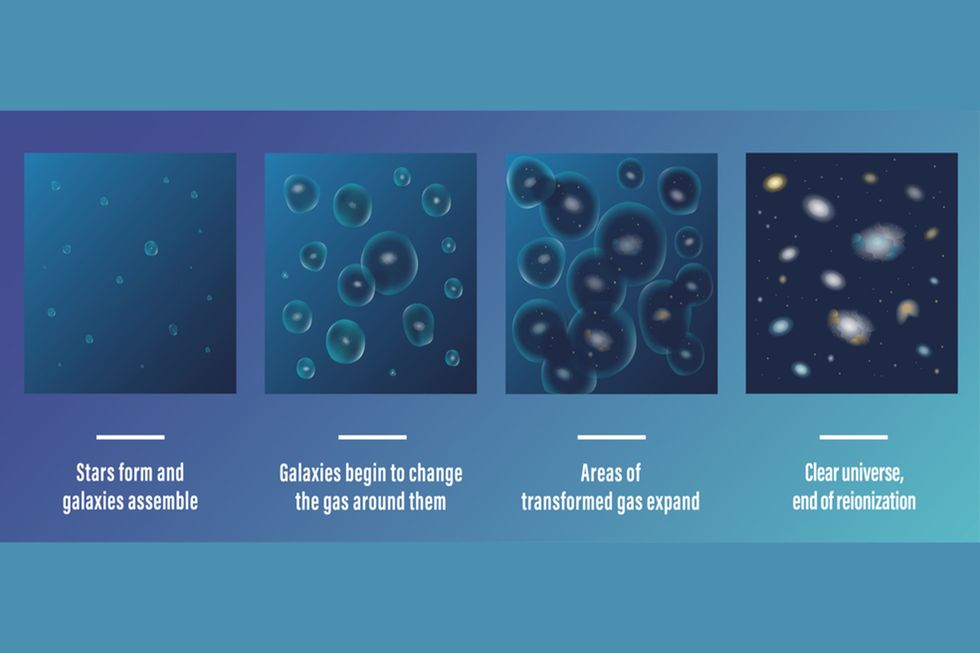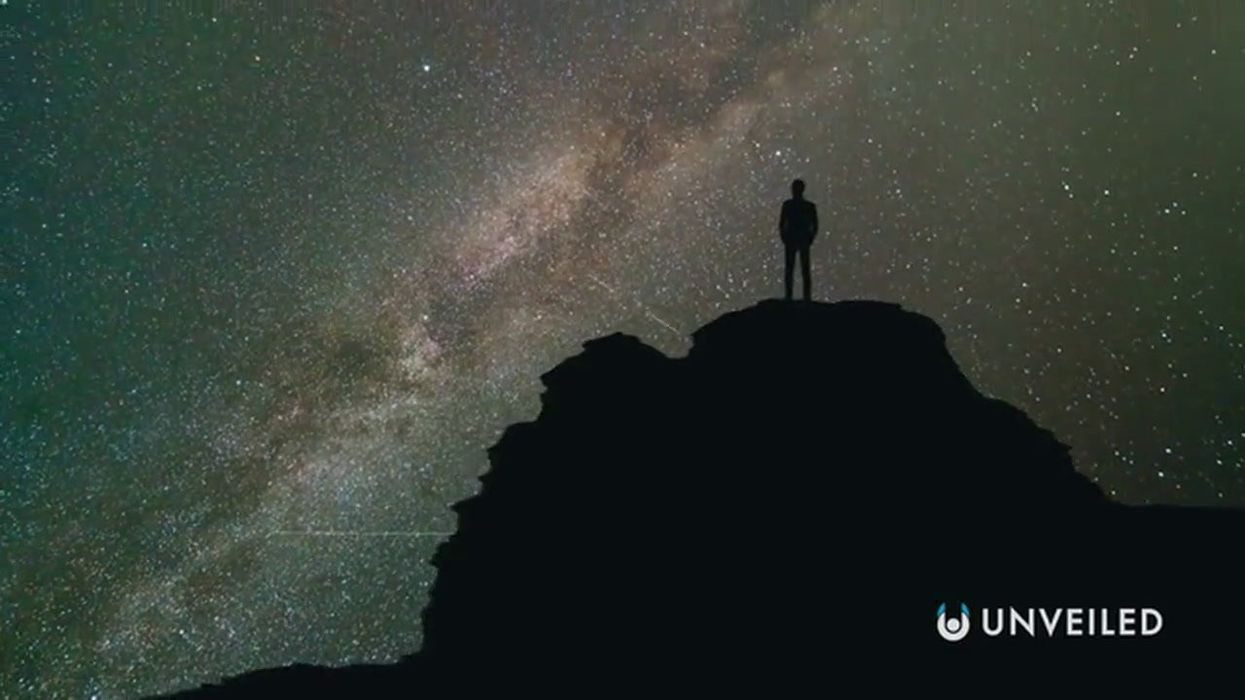Science & Tech
Harriet Brewis
Jun 28, 2023
What Was Before The Big Bang? | Unveiled
content.jwplatform.com
Many of us will never get our heads around the fact that scientists can actually look back in time.
The power of telescopes enables us to study phenomena that occurred billions of years ago, and even gaze upon the dawn of creation itself.
Now, astrophysicists have solved a great mystery at the heart of our universe's birth, when everything was shrouded in a dense fog.
In four separate papers published in (or accepted into) The Astrophysical Journal, scientists at MIT, Japan’s Nagoya University, ETH Zurich and the University of Groningen in the Netherlands have shared some stunning insights into the period known as the Epoch of Reionisation.
Sign up for our free Indy100 weekly newsletter
Relatively little is known about this era, during which the thick fog engulfing the universe gradually cleared, allowing stars and galaxies to shine.
However, fresh observations made using the James Webb Space Telescope (JWST) are beginning to pull back the curtain on it all.
Now, scientists have finally figured out why one billion years after the Big Bang, that dense fog finally dispersed.
First things first, what exactly is the Epoch of Reionisation?
During the first billion years after the Big Bang, space was filled with a soupy mist of ionised gas which was impenetrable to light.
As the gas began to cool, protons and electrons began to combine to form mostly neutral hydrogen atoms and some helium.
These clumps of neutral hydrogen are then believed to have started forming stars, grouped into galaxies.
This process reionised the gas but, because space had expanded by this point, the newly ionised hydrogen was diffuse enough to allow light to stream through, as Science Alert notes.
A few million years later, the universe had become the transparent expanse with which we’re now familiar.
To explain, here’s a look at what those four new papers reveal about why space became so much clearer.

Paper 1
In the first study, researchers at the University of Groningen revealed that they had discovered crucial evidence of star formation during the Epoch of Reionisation.
They found a specific wavelength of hydrogen, called hydrogen alpha, which is formed when a star is born and blasts out huge amounts of ionising ultraviolet radiation.
Until now, no one was sure what produced all the ultraviolet light that emerged during the Epoch of Reionisation.
But, thanks to their detection of hydrogen alpha, the Groningen team of astronomers that star formation had a “significant role in the process of reionisation”.
Paper 2
Another paper, spearheaded by Japanese astrophysicist Daichi Kashino, added galaxies into the mix.
According to Kashino and his international team, reionisation happened in “bubbles” around the plethora of newly-formed galaxies.
They used JWST data to pinpoint these pockets and measure them precisely, identifying that they had a 2 million light-year radius around the tiny galaxies.
Over the next hundred million years, the bubbles grew larger and larger, eventually merging and causing the entire universe to become transparent, according to an article published by NASA.

Paper 3
A third group of researchers, led by ETH Zurich astrophysicist Jorryt Matthee, analysed the characteristics of these bubbles and found that the early galaxies they contained were hot, low in metals and dust and very active.
He said they were “more chaotic” than those in the nearby universe, adding: "Webb shows they were actively forming stars and must have been shooting off many supernovae. They had quite an adventurous youth!”
Paper 4
A fourth paper, led by MIT cosmologist Anna-Christina Eilers, focused its attention on the quasar galaxy at the centre of the JWST observations.
This quasar is, according to NASA, an “extremely luminous active supermassive black hole that acts like an enormous flashlight”.
Eilers and her team used data from the telescope to confirm that the black hole is the most massive currently known in the early universe, weighing 10 billion times the mass of the Sun.
“We still can’t explain how quasars were able to grow so large so early in the history of the universe,” she said. “That’s another puzzle to solve!”

Conclusion
Well done if you’ve survived to the end – this is all pretty heavy-going. But the key point here is that before the JWST no one knew for sure what caused reionisation.
Now, thanks to the mighty golden-eyed telescope, one of the great mysteries behind the birth of creation has finally been solved.
Have your say in our news democracy. Click the upvote icon at the top of the page to help raise this article through the indy100 rankings.
Top 100
The Conversation (0)














